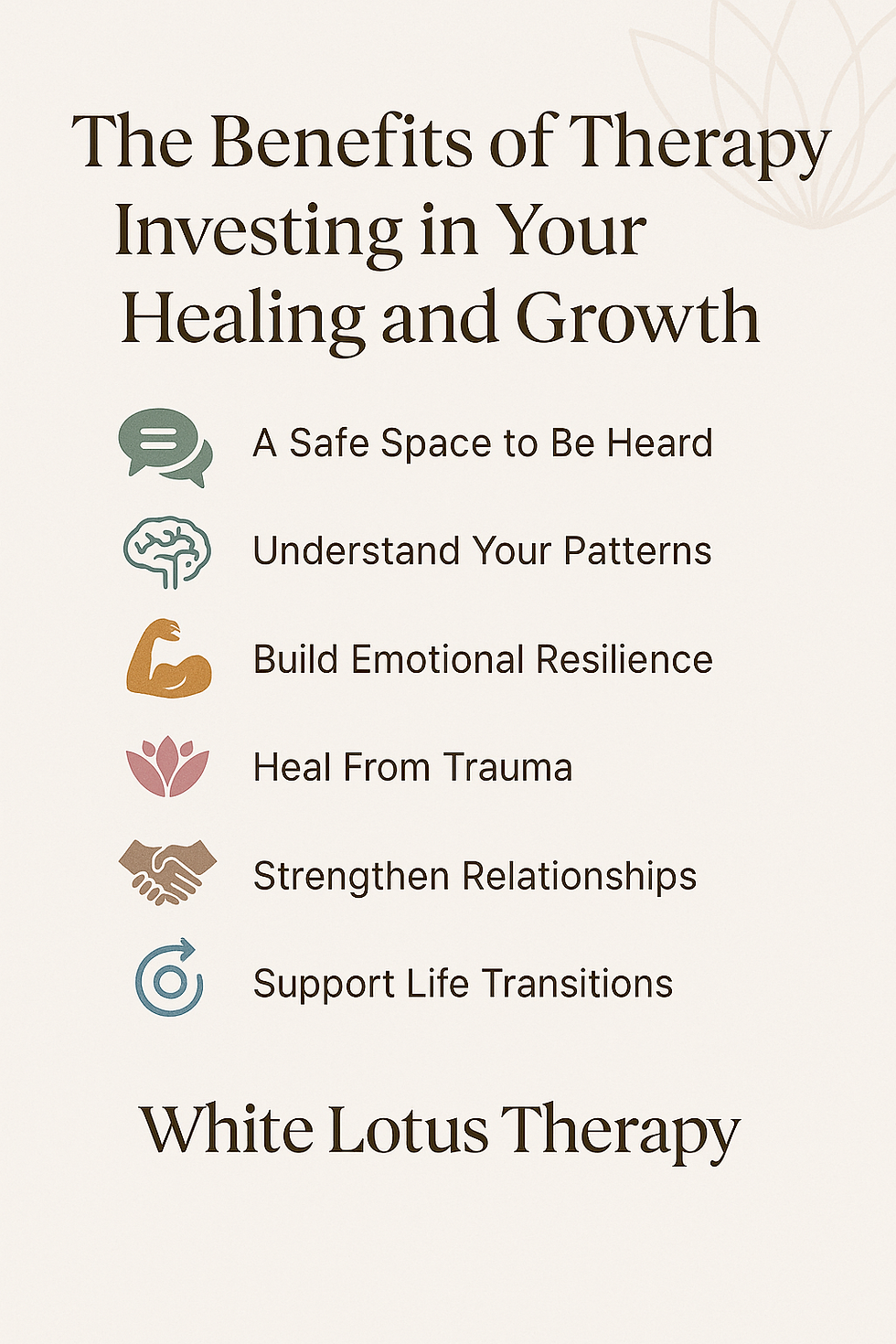What is Brainspotting?
- sasha2930
- Jul 12
- 2 min read

Understanding Brainspotting
Brainspotting is a powerful, focused treatment method that helps identify, process, and release the neurophysiological sources of emotional and physical pain, trauma, dissociation, and a wide range of distressing symptoms. It is both a diagnostic and therapeutic tool that supports deep healing within a safe, attuned therapeutic relationship.
Developed by Dr. David Grand, Brainspotting was founded on the premise that “where you look affects how you feel.” Through eye position and bilateral sound stimulation, Brainspotting helps access trauma stored deep in the brain and body—often beyond the reach of traditional talk therapy.
“Brainspotting works with the deep brain and the body through its direct access to the autonomic and limbic systems within the body’s central nervous system.”— Dr. David Grand, www.brainspotting.com
How It Works
During a Brainspotting session, the therapist helps the client locate a specific “brainspot”—a point in visual space linked to a traumatic or emotionally charged memory stored in the subcortical brain. With the support of the therapist and optional biolateral sound (gentle tones alternating in each ear), the brain is given the space and safety to process and release the underlying tension or trauma.
Unlike traditional approaches, Brainspotting does not rely on narrative or cognitive insight. Instead, it taps directly into the body and brain's natural ability to heal, working beneath the surface to unlock what’s been held—sometimes for years.
The Healing Relationship
While Brainspotting is grounded in neuroscience, it is not just a technique—it is a tool that lives within the therapeutic relationship. The foundation of all healing lies in human connection. A skilled, compassionate therapist provides a safe container where clients feel heard, accepted, and understood.
“There is no replacement for a mature, nurturing therapeutic presence... where [clients] feel heard, accepted, and understood.”— www.brainspotting.com
Brainspotting simply enhances this connection, offering a pathway to the deeper parts of the brain that talk therapy may not always reach.
Who Is It For?
Brainspotting can benefit individuals struggling with:
PTSD and complex trauma
Anxiety or depression
Chronic pain and somatic symptoms
Dissociation or emotional numbness
Grief and loss
Performance blocks (creative, athletic, academic, etc.)
Feeling “stuck” despite previous therapy
Many clients choose Brainspotting after hitting a plateau in other treatments. It is also an ideal option for those who want to explore healing without needing to retell traumatic experiences.
A Neurobiological and Holistic Approach
Brainspotting engages the autonomic nervous system, limbic system, and subcortical brain, making it a physiological process with psychological, emotional, and physical impact. It respects the body's natural wisdom and promotes healing on all levels—mind, body, and spirit.
Begin Your Journey
At White Lotus Therapy, Brainspotting is offered as part of our holistic, trauma-informed approach. Each session is tailored to the individual, held in a supportive and non-judgmental space. Whether you’re new to therapy or looking to deepen your healing journey, Brainspotting may offer the breakthrough you've been searching for.
Contact us today to book a session or learn more about how Brainspotting can support your path toward healing.
References & Acknowledgements
All Brainspotting concepts, descriptions, and terminology are based on the original work of Dr. David Grand, founder of Brainspotting.For more information, please visit the official Brainspotting website: https://brainspotting.com



Comments